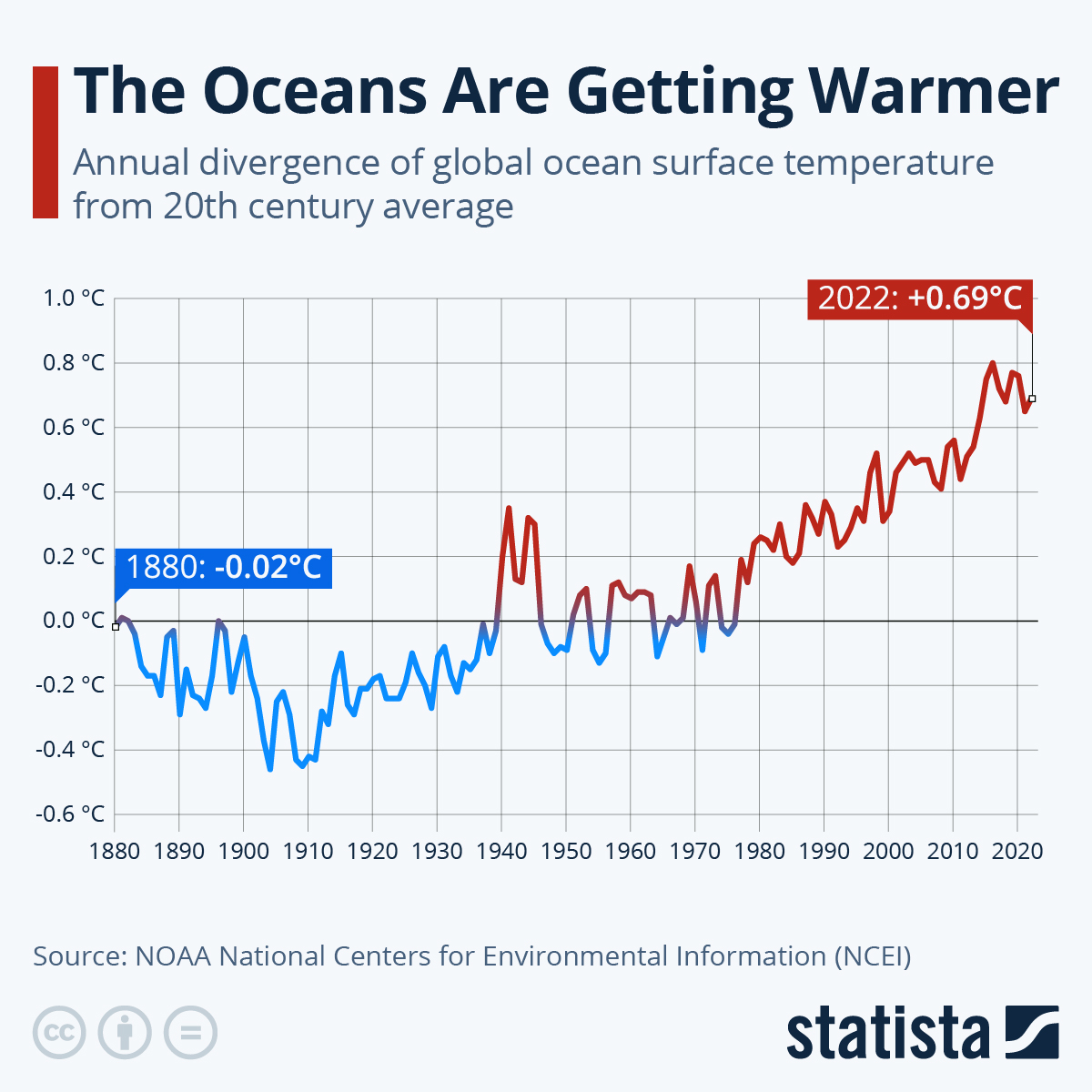The annual average temperature of ocean surfaces has been diverging from the 20th century (1900-1999) average more and more since the 1980s. In 2022, global ocean surface temperatures were 0.69 degrees Celsius higher than that century’s average, according to the National Oceanic and Atmospheric Administration (NOAA).
While the annual divergence fluctuates (as some years happen to be hotter and others colder), there is still a definite upwards trend visible in the data. The year with the biggest divergence on record was 2016, when measured ocean temperatures were 0.8 degree Celsius higher than the stated average. 2016 was the hottest year ever recorded (in some calculations tied with 2020). According to a release by NOAA, 2022 was the sixth-hottest year on record, making the last eight years the eight hottest years in history.
The global data for near-surface temperatures comes from ships, buoys and satellite measurements of the oceans. While fluctuations are a normal phenomenon, an increase of the number of years that are warmer on average is expected due to climate change, which is the increase of global average and mean land and ocean temperatures. According to scientific findings, the continuing global warming will lead to changes in the strength, frequency, spatial extent and duration of extreme weather events.





















